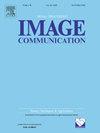MA-MNN: Multi-flow attentive memristive neural network for multi-task image restoration
IF 2.7
3区 工程技术
Q2 ENGINEERING, ELECTRICAL & ELECTRONIC
引用次数: 0
Abstract
Images taken in rainy, hazy, and low-light environments severely hinder the performance of outdoor computer vision systems. Most data-driven image restoration methods are task-specific and computationally intensive, whereas the capture and processing of degraded images occur largely in end-side devices with limited computing resources. Motivated by addressing the above issues, a novel software and hardware co-designed image restoration method named multi-flow attentive memristive neural network (MA-MNN) is proposed in this paper, which combines a deep learning algorithm and the nanoscale device memristor. The multi-level complementary spatial contextual information is exploited by the multi-flow aggregation block. The dense connection design is adopted to provide smooth transportation across units and alleviate the vanishing-gradient. The supervised calibration block is designed to facilitate achieving the dual-attention mechanism that helps the model identify and re-calibrate the transformed features. Besides, a hardware implementation scheme based on memristors is designed to provide low energy consumption solutions for embedded applications. Extensive experiments in image deraining, image dehazing and low-light image enhancement have shown that the proposed method is highly competitive with over 20 state-of-the-art methods.
MA-MNN:用于多任务图像恢复的多流注意记忆神经网络
在下雨、朦胧和低光环境中拍摄的图像严重阻碍了室外计算机视觉系统的性能。大多数数据驱动的图像恢复方法是特定任务和计算密集型的,而退化图像的捕获和处理主要发生在计算资源有限的端端设备中。为解决上述问题,本文提出了一种软硬件协同设计的图像恢复方法——多流关注忆阻神经网络(MA-MNN),该方法将深度学习算法与纳米级器件忆阻相结合。多流聚合块利用多层次互补的空间上下文信息。采用密集连接设计,保证单元间运输顺畅,减轻梯度消失。监督校准块旨在促进实现双注意机制,帮助模型识别和重新校准转换后的特征。此外,设计了基于忆阻器的硬件实现方案,为嵌入式应用提供了低能耗的解决方案。在图像去噪、图像去雾和弱光图像增强方面的大量实验表明,该方法与20多种最先进的方法具有很强的竞争力。
本文章由计算机程序翻译,如有差异,请以英文原文为准。
求助全文
约1分钟内获得全文
求助全文
来源期刊

Signal Processing-Image Communication
工程技术-工程:电子与电气
CiteScore
8.40
自引率
2.90%
发文量
138
审稿时长
5.2 months
期刊介绍:
Signal Processing: Image Communication is an international journal for the development of the theory and practice of image communication. Its primary objectives are the following:
To present a forum for the advancement of theory and practice of image communication.
To stimulate cross-fertilization between areas similar in nature which have traditionally been separated, for example, various aspects of visual communications and information systems.
To contribute to a rapid information exchange between the industrial and academic environments.
The editorial policy and the technical content of the journal are the responsibility of the Editor-in-Chief, the Area Editors and the Advisory Editors. The Journal is self-supporting from subscription income and contains a minimum amount of advertisements. Advertisements are subject to the prior approval of the Editor-in-Chief. The journal welcomes contributions from every country in the world.
Signal Processing: Image Communication publishes articles relating to aspects of the design, implementation and use of image communication systems. The journal features original research work, tutorial and review articles, and accounts of practical developments.
Subjects of interest include image/video coding, 3D video representations and compression, 3D graphics and animation compression, HDTV and 3DTV systems, video adaptation, video over IP, peer-to-peer video networking, interactive visual communication, multi-user video conferencing, wireless video broadcasting and communication, visual surveillance, 2D and 3D image/video quality measures, pre/post processing, video restoration and super-resolution, multi-camera video analysis, motion analysis, content-based image/video indexing and retrieval, face and gesture processing, video synthesis, 2D and 3D image/video acquisition and display technologies, architectures for image/video processing and communication.
 求助内容:
求助内容: 应助结果提醒方式:
应助结果提醒方式:


